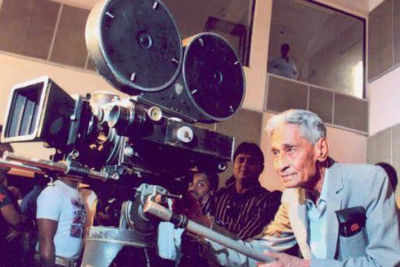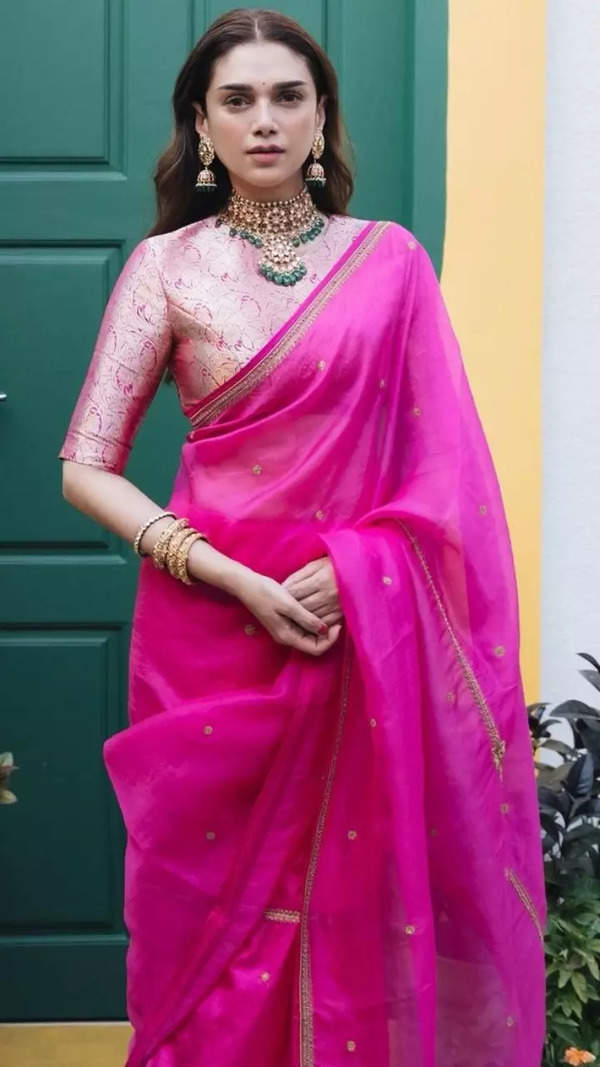- News
- entertainment
- kannada
- movies
- Guru Dutt’s ‘eye’ VK Murthy passes away
Trending
This story is from April 8, 2014
Guru Dutt’s ‘eye’ VK Murthy passes away
The legend breathed his last at his Bangalore residence on Mond

A back lit Guru Dutt positioned, Christ-like, against the doorway of an auditorium in Pyaasa’s climactic song ‘Yeh duniya agar mil bhi jaaye to kya hai’. A single beam of light uniting two lovers in Kaagaz Ke Phool’s ‘Waqt ne kiya kya haseen situm’. A posse of dancers in a veil of darkness accompanying a main dancer bathed in a flood of luminosity in Sahib Bibi Aur Ghulam’s ‘Sakiya aaj mujhe neend nahin aayegi’.
These iconic images, long part of Hindi cinema’s hall of fame, were crafted by V K Murthy, Guru Dutt’s legendary cinematographer, who died of old age in his Shankarapuram, Bangalore, residence on Monday. He was 90.
Murthy, who gave Guru Dutt’s films their chiaroscuro splendour, used light and shade in an almost painterly fashion — whether it was in Dutt’s earlier crime thrillers and lighthearted capers like CID, Aar Paar and Mr & Mrs 55 or his later, more sombre, films.
While he was indebted to ace cameraman Fali Mistry, whom he assisted on two films and learnt the rudiments of his craft from, it was while assisting V Ratra on Baazi at Famous Studio that he met Guru Dutt, who, impressed by his work, signed him on for his next film. The director-cinematographer team went on to become legendary in the manner of Satyajit Ray-Subrata Mitra or Ingmar Bergman-Sven Nykvist — you couldn’t mention one without bringing to mind the other.
HOME-GROWN GENIUS: Born in Mysore in 1923, earned a diploma in cinematography from S J Polytechnic, Bangalore, in 1946
BEST KNOWN MOVIES: Baazi, Pyaasa, Kaagaz Ke Phool, Sahib Bibi Aur Ghulam and Chaudhvin Ka Chand
ROLE IN SANDALWOOD: Wielded the camera for Hoovu Hannu in 1993 on the insistence of S V Rajendra Singh Babu
WELL HONOURED: FIlmfare Awards for Kaagaz Ke Phool (1959) and Sahib Bibi Aur Ghulam (1962); IIFA Lifetime Achievement Award in 2005; Dadasaheb Phalke Award for 2008
Interestingly, when Kaagaz Ke Phool was made and premiered years later, Shammi Kapoor, during the interval, came out asking loudly for “the hero of the film”. Someone pointed out where Guru Dutt was standing, but Kapoor made a beeline for Murthy, lifted him up and said, “Here’s the real hero of the film. Sab log taaliyan bajao!”
Murthy’s cinematographic innovations were many, but one such – a convex reflector he got made in order to diffuse the lighting for a large group shot – turned out to be a concept simultaneously being worked on in Hollywood and patented a few months later under the name of ‘parabolic reflector’.
His creativity brought him several awards (culminating with the most prestigious, Dadasaheb Phalke Award, in 2010); but his career, for all practical purposes, ended the day Guru Dutt committed suicide in 1964.
The later films Murthy did for other directors out of the confines of the leisurely studio system were just “a battle against time” – though he did, years later, work on Kamal Amrohi’s Pakeezah and Razia Sultan.
“My creative work, apart from these projects, died with Guru Dutt,” he once told this correspondent. “But he gave me my place in cinema – and I’ll always be grateful (to him) for that.”
These iconic images, long part of Hindi cinema’s hall of fame, were crafted by V K Murthy, Guru Dutt’s legendary cinematographer, who died of old age in his Shankarapuram, Bangalore, residence on Monday. He was 90.
Murthy, who gave Guru Dutt’s films their chiaroscuro splendour, used light and shade in an almost painterly fashion — whether it was in Dutt’s earlier crime thrillers and lighthearted capers like CID, Aar Paar and Mr & Mrs 55 or his later, more sombre, films.
While he was indebted to ace cameraman Fali Mistry, whom he assisted on two films and learnt the rudiments of his craft from, it was while assisting V Ratra on Baazi at Famous Studio that he met Guru Dutt, who, impressed by his work, signed him on for his next film. The director-cinematographer team went on to become legendary in the manner of Satyajit Ray-Subrata Mitra or Ingmar Bergman-Sven Nykvist — you couldn’t mention one without bringing to mind the other.
Murthy always maintained he was grateful to be working with a director like Dutt, who acknowledged the artistic importance of cinematography. A story once narrated by him details how Dutt, who had snapped at him for taking too long to light a shot for Aar Paar, later apologized and told him: “One day I will make a film in which there will be only two heroes: you and me.” He then narrated to Murthy the story of Kaagaz Ke Phool.
RICH CAREER
HOME-GROWN GENIUS: Born in Mysore in 1923, earned a diploma in cinematography from S J Polytechnic, Bangalore, in 1946
BEST KNOWN MOVIES: Baazi, Pyaasa, Kaagaz Ke Phool, Sahib Bibi Aur Ghulam and Chaudhvin Ka Chand
ROLE IN SANDALWOOD: Wielded the camera for Hoovu Hannu in 1993 on the insistence of S V Rajendra Singh Babu
WELL HONOURED: FIlmfare Awards for Kaagaz Ke Phool (1959) and Sahib Bibi Aur Ghulam (1962); IIFA Lifetime Achievement Award in 2005; Dadasaheb Phalke Award for 2008
‘My creative work died with Dutt’
Interestingly, when Kaagaz Ke Phool was made and premiered years later, Shammi Kapoor, during the interval, came out asking loudly for “the hero of the film”. Someone pointed out where Guru Dutt was standing, but Kapoor made a beeline for Murthy, lifted him up and said, “Here’s the real hero of the film. Sab log taaliyan bajao!”
Murthy’s cinematographic innovations were many, but one such – a convex reflector he got made in order to diffuse the lighting for a large group shot – turned out to be a concept simultaneously being worked on in Hollywood and patented a few months later under the name of ‘parabolic reflector’.
His creativity brought him several awards (culminating with the most prestigious, Dadasaheb Phalke Award, in 2010); but his career, for all practical purposes, ended the day Guru Dutt committed suicide in 1964.
The later films Murthy did for other directors out of the confines of the leisurely studio system were just “a battle against time” – though he did, years later, work on Kamal Amrohi’s Pakeezah and Razia Sultan.
“My creative work, apart from these projects, died with Guru Dutt,” he once told this correspondent. “But he gave me my place in cinema – and I’ll always be grateful (to him) for that.”
End of Article
FOLLOW US ON SOCIAL MEDIA









